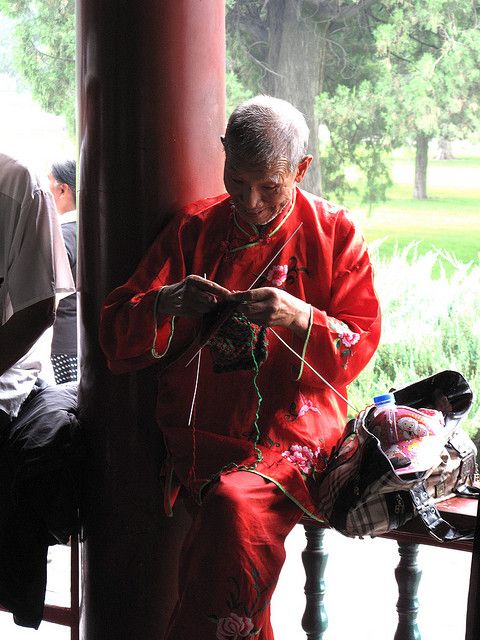This week for seminar, we as a class read, Dark Blue Suit by Peter Bacho. The story featured a Filipino-American main character nicknamed “Buddy” or “Sonny.” There were moments where Buddy and his childhood friends spoke of women in demeaning terms and the women became sexual objects. Buddy engages in these conversations as well as cheat on his wife to support his relationship with masculinity. When connecting masculinity with my essay topic, I remembered the stigma against men and the yarn craft. How do these men, especially in Asian countries, connect with their masculinity through their craft and move past the belief that yarn working is a woman’s occupation?
One of the books in my essay’s bibliography is: War Imagery in Women’s Textiles: An International Study of Weaving, Knitting, Sewing, Quilting, Rug Making and Other Fabric Arts by Deborah A. Deacon. Chapter Five covers Asia and the Pacific Rim. On page 125, an ancient Chinese proverb is mentioned, “Men till, women weave.” This is within the context of men and women’s work within society depending on the space they occupied. Women were in the house and weaved while men harvested food. Both products from the women of the house and the men in the fields were equal because both went to market and brought home an income. Women of China produced textiles in order to learn, “…womanly virtue, proper womanly speech and properly womanly conduct, as prescribed by the tenants of Confucianism(125).” these skills were also to teach frugality, order, and self-discipline. Other countries in the Pacific Rim focused on women textiles to support patriotism and the creation of a bride’s dowry.
Certain stigmas against men knitting might arise from the “lowering” of a man’s status by doing a “woman’s craft.” He is learning woman’s virtues and might be weakening his status in society. In my life, I have known one man named Mark who crocheted. He was a friend of my mother’s and would visit our home with his wife when I was eight years old or so. He would make dolls for children. At holiday bazaars, his section of the stall would overflow with bunnies and teddy bears. I loved them, of course. Mark gave me a bear when I was little and I kept it until last year. I never thought his creation of dolls negated his level of masculinity. In general, I never thought of masculinity as a child. I thought he was a gentle man. I attributed this to his tranquil silence while crafting. I was raised with just my mother who crafted, so I thought others who crafted were the correct people to be around. I am sure if Mark was a man who only spoke about engines and cars, I would have thought he was abrasive. What does this mean on my views of masculinity?
Nowadays, most internet articles attribute male knitting as a new fad for stress relief. In one instance, a man had quit smoking and was recommended knitting in order to do something with his hands. Another man had lost his home and spent his days standing on street corners with a sign, “Will knit for food.” He eventually earned money and a following online and now has his home and two published books. Mad Man Knitting by Gregory Patrick is one of them and is his bestseller.
I believe the relation to either masculinity or femininity through crafting has blurred. There is no true delegation of which gender makes a project. It is viewed as awesome to own something that you have created with your own hands. It is even better to have it well made.
